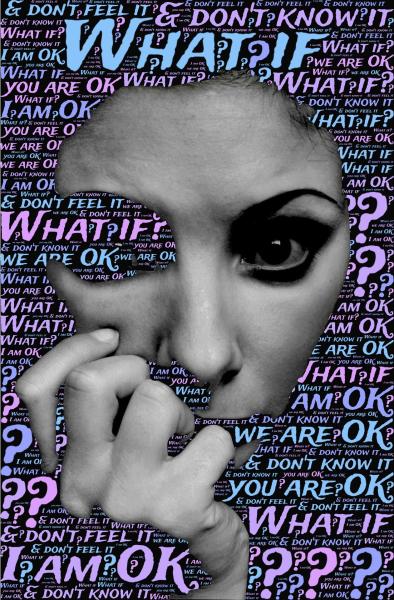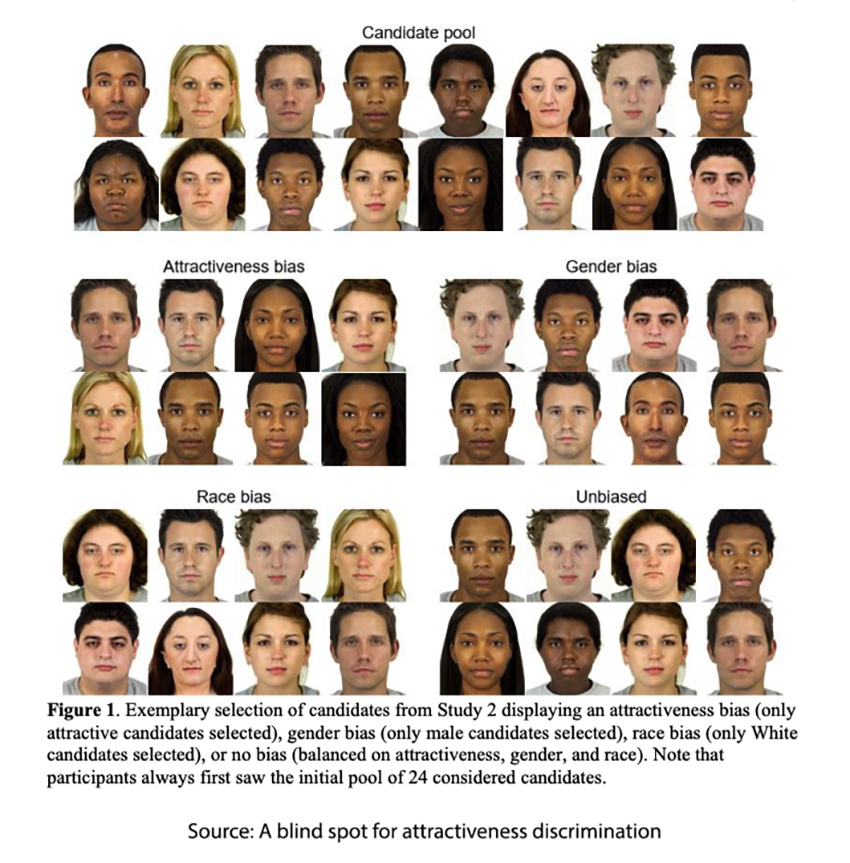“Lookism starts, like every form of bigotry, with prejudice and stereotypes.
Studies show that most people consider an “attractive” face to have clean, symmetrical features. … we find it easier — from a brain processing perspective — to look at attractive people.
Attractive people thus start off with a slight physical advantage. But then people project all sorts of widely unrelated stereotypes onto them. In survey after survey, beautiful people are described as trustworthy, competent, friendly, likable, and intelligent, while ugly people get the opposite labels.”
- David Brooks, NY Times
The research sought to investigate whether lookism was real and how it might come about. To get at an answer, researchers carried out the following experiment. They showed the participants the pictures of 24 applicants for a job, told them that all were equally qualified, and then showed one of four outcomes. Three outcomes displayed a bias for gender, race, or attractiveness; the fourth was an unbias sample. Here is a typical representation.
The researchers used a variety of “measures” for discrimination
- Did the participants notice biased selection on their own
- Did the participants judge the selection to be fair
In each instance, gender or racial bias was quickly noted, attractiveness as a bias hardly noticed at all. In another series of experiments, utilizing 20 male images, again broken down along the lines of race and attractiveness. All had been convicted of a crime, and the evidence was equally ambivalent in each instance. When there was a racial bias to the convicted, there was a greater belief that the verdict had been unfair; when the bias was attractiveness, there was a greater belief that the judgment had been fair.
In a final series of experiments, the researchers found that while participants could multi-task in identifying race and gender discrimination when made aware of attractiveness bias and its possible use in selection, they became more blind to race and gender discrimination. Not all discrimination is weighed, in this case unconsciously, as equal.
They concluded,
- “participants’ blind spot for attractiveness discrimination was robust and widespread.”
- “even obvious instances of attractiveness discrimination often go undetected.”
- “people view attractiveness discrimination as unfair but fail to detect it on their own.”
- “people fail to detect attractiveness discrimination because they only pay attention to more prototypical types of discrimination (e.g., gender and race).”
- “interventions can overcome people’s blind spot for attractiveness discrimination.” More specifically, making them aware of attractiveness discrimination.
Source: A blind spot for attractiveness discrimination PsyArXiv Preprints DOI: 10.31234/osf.io/5uz8g





